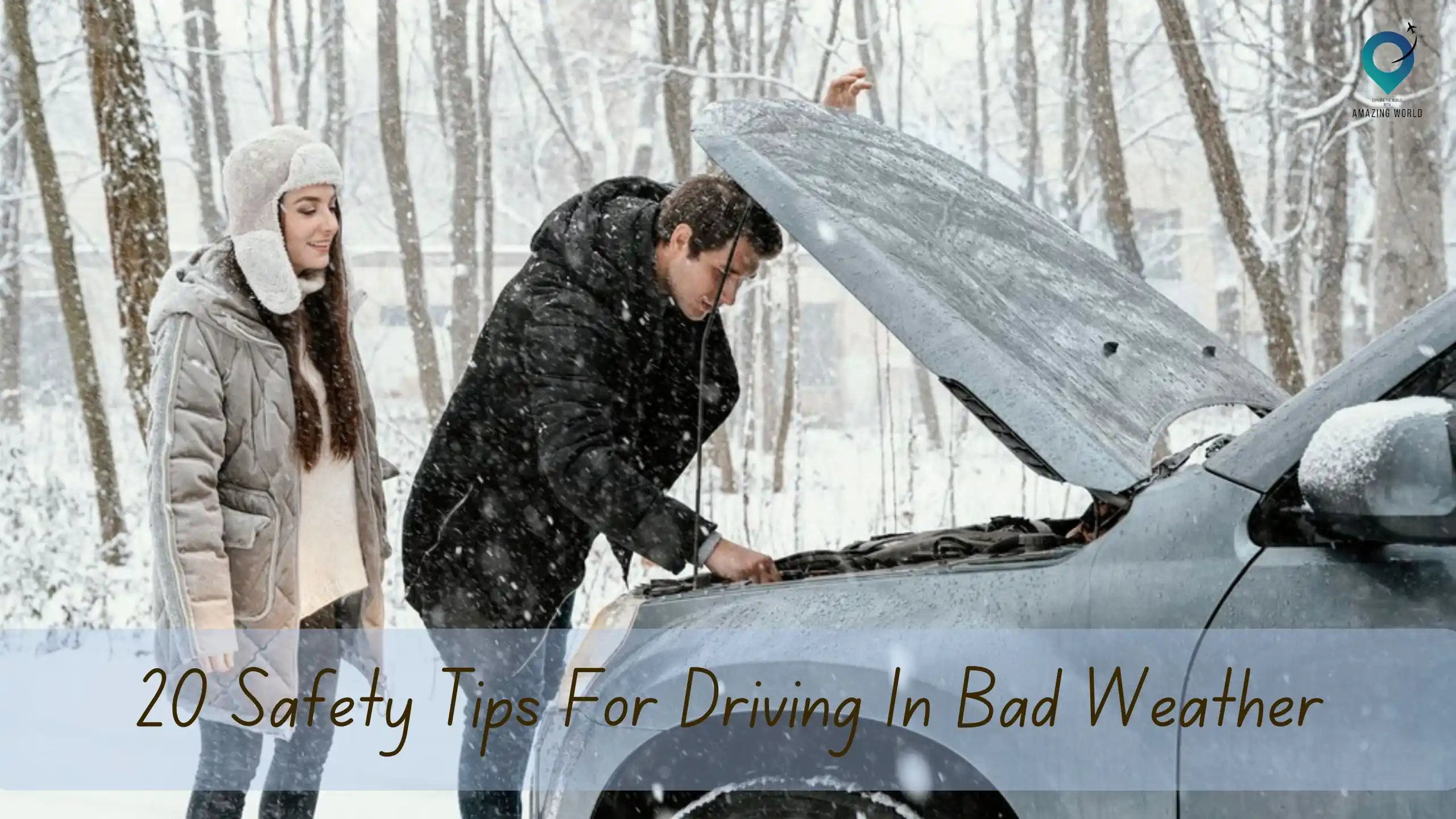Tips for Dealing with Car Trouble on a Road Trip
Table of Contents
Toggle
Are you gearing up for an epic road trip in 2023? Excitement is high as you plan your route, pack your bags, and hit the open road. However, as much as we hope for smooth sailing, car trouble can happen when we least expect it. A flat tire, a dead battery, or an engine problem can quickly put a damper on your adventure.
That’s why it’s essential to be prepared for the unexpected. In this article, we’ll share essential tips for dealing with car trouble on your 2023 road trip. From preventative maintenance to DIY repairs and professional help, we’ll help you stay safe, avoid stress, and get back to enjoying your journey as quickly as possible.”
Remember, while it’s important to include relevant keywords throughout your article, it’s also essential to write in a way that sounds natural and engaging to your readers. The focus should be on providing value and useful information, not just trying to rank for certain keywords.
Before Your Trip: Tips for Preventing Car Trouble
Preparing your car before a road trip is critical to preventing car trouble on the road. Here are some tips for preventing car trouble before your trip:
- Get your car serviced: It’s essential to get your car serviced by a professional mechanic before heading out on a road trip. A thorough inspection can identify potential problems and address them before they become major issues.
- Check the fluid levels: Make sure to check the oil, coolant, brake, and transmission fluid levels before hitting the road. Top them off if necessary.
- Inspect the tires: Inspect your tires for any signs of damage, such as cracks or bulges. Ensure that the tire pressure is at the recommended level and that the tread depth is sufficient.
- Test the brakes: Test the brakes to ensure they are working correctly. Look for any signs of brake pad wear, such as a squeaking or grinding noise when braking.
- Check the battery: Make sure the battery is in good condition and fully charged. Replace an old battery if necessary.
- Inspect the lights: Ensure all the lights, including headlights, taillights, and turn signals, are working correctly.
- Bring essential tools and supplies: Pack essential tools and supplies in case of emergencies, such as a spare tire, tire jack, jumper cables, and a first-aid kit.
By taking these preventative measures before hitting the road, you can significantly reduce the risk of car trouble during your trip. Remember, prevention is key, and proper maintenance can save you time, money, and stress in the long run.
III. During Your Trip: What to Do When You Encounter Car Trouble
First: Pull over safely If you experience car trouble while driving, the first thing you should do is try to pull over to a safe location as soon as possible. This could be a rest area, a gas station, or the side of the road. Be sure to turn on your hazard lights to alert other drivers that you are experiencing car trouble.
Secondly: Assess the situation Once you have safely pulled over, take a moment to assess the situation. Try to identify the problem and determine whether it’s something you can fix yourself or if you need professional help. Here are some common car problems and what you can do to address them:
- Flat tire: If you have a spare tire and a tire jack, you can replace the flat tire yourself. Follow the instructions in your car’s owner’s manual to safely jack up the car and remove the flat tire. Replace it with the spare tire and use a lug wrench to tighten the lug nuts. Be sure to have the flat tire repaired or replaced as soon as possible.
- Dead battery: If your car won’t start due to a dead battery, you may be able to jump-start the battery with jumper cables and another car’s battery. Follow the instructions in your car’s owner’s manual to safely connect the cables and jump-start the battery.
- Overheated engine: If your engine overheats, turn off the air conditioning and turn on the heater to help dissipate the heat. Pull over to a safe location and wait for the engine to cool down before checking the coolant level. If the coolant level is low, add more coolant or water to the reservoir. If the engine is still overheating, call for professional help.
Third: Use your resources If you have packed essential tools and supplies, now is the time to use them. For example, you could use a tire gauge to check your tire pressure or a flashlight to inspect the engine. If you have a first-aid kit, use it to treat any minor injuries.
Additionally: Call for help If you cannot fix the problem yourself, call for professional help. Call your roadside assistance provider or a local mechanic for help. If you’re in a remote area without cell phone service, try to flag down another driver for help or walk to the nearest phone. Be sure to provide your location and a description of the problem when you call for help.
Finally: Stay safe While you wait for help to arrive, prioritize your safety. Stay inside your vehicle with the doors locked, especially if you’re in an unfamiliar area. Keep your cell phone charged and make sure you have plenty of water and snacks on hand. This will help you stay comfortable and hydrated while you wait for assistance.
By following these steps and staying calm and prepared, you can effectively handle car trouble on your road trip and get the help you need to get back on the road.
Common Car Problems and How to Fix Them on the Road

When on a road trip, it’s not uncommon for travelers to encounter car problems. While some issues may require professional help, there are several common car problems that can be fixed on the road with a little DIY effort. Here are some examples of common car problems and tips for fixing them on your own:
- Flat tire: A flat tire is one of the most common car problems you may face on a road trip. To fix it, start by finding a safe location to change the tire, away from traffic. Make sure your car is in the park and the emergency brake is on. Use a wrench to loosen the lug nuts on the flat tire, then use a jack to lift the car off the ground. Remove the lug nuts and the flat tire, replace it with the spare tire, tighten the lug nuts by hand, lower the car back to the ground, and then use the wrench to fully tighten the lug nuts.
- Dead battery: If your car won’t start because of a dead battery, you can try jump-starting it. Start by finding another car to use as a power source. Connect the jumper cables to the positive and negative terminals on each battery, making sure to connect them in the correct order. Let the working car run for a few minutes to charge your battery, then try starting your car. If it starts, remove the cables in the reverse order of how you connected them.
- Overheating engine: If your car’s temperature gauge shows that the engine is overheating, pull over to a safe location and turn off the engine. Let the car cool down for at least 30 minutes before attempting to open the hood. Once the engine has cooled down, check the coolant level and refill it if necessary. You can also check for any leaks or damage to the hoses and radiator. If the problem persists, seek professional help.
- Malfunctioning brakes: If you notice that your brakes are not working properly, pull over to a safe location and inspect the brake pads. If they are worn or damaged, you may need to replace them. You can also check the brake fluid level and refill it if necessary. If the problem persists, seek professional help.
By being prepared with the right tools and knowledge, you can tackle common car problems on your road trip and save yourself the hassle and expense of seeking professional help. However, always remember to prioritize your safety and seek professional help if you’re unsure about how to fix the problem.
When to Call for Professional Help

Knowing when to call for professional help is important when you encounter car trouble on a road trip. While some problems can be fixed with basic knowledge and tools, others require the expertise of a mechanic. Here are some signs that your car needs professional attention and tips for finding a reliable mechanic or repair shop:
- Strange noises: If you hear unusual sounds such as grinding, squeaking, or knocking, it may indicate a serious issue with your car’s engine, transmission, or brakes. It’s best to stop driving and call for professional help.
- Warning lights: If a warning light comes on in your car, such as the check engine light or oil pressure light, it’s a sign that something is wrong. Don’t ignore these warnings and take your car to a mechanic as soon as possible.
- Fluid leaks: If you notice any fluid leaking from your car, such as oil, coolant, or brake fluid, it could indicate a serious problem that requires immediate attention.
- Overheating: If your car’s temperature gauge shows that the engine is overheating or you smell burning, it’s a sign that your car needs to be checked by a professional.
When it comes to finding a reliable mechanic or repair shop, here are some tips:
- Research: Look for reputable repair shops in the area before your trip. Check online reviews and ratings, and ask for recommendations from friends or family.
- Certification: Look for mechanics who are certified by the National Institute for Automotive Service Excellence (ASE). This certification indicates that they have passed rigorous testing and have the knowledge and skills to handle a wide range of repairs.
- Warranty: Check if the repair shop offers a warranty on their work. This can give you peace of mind knowing that the repairs are guaranteed.
- Communication: Look for a repair shop that communicates clearly and honestly about the repairs needed and the cost involved. Avoid shops that try to pressure you into unnecessary repairs or charge for work you didn’t approve.
By knowing when to call for professional help and finding a reliable mechanic or repair shop, you can ensure that your car is properly taken care of and enjoy a stress-free road trip.
Conclusion
Car trouble is an inevitable part of any road trip. However, by taking some basic precautions and knowing what to do in case of an emergency, you can avoid unnecessary stress and stay safe on the road. Remember to check and maintain your vehicle before hitting the road, pack essential tools and supplies, and know how to handle common car problems on your own.
If you encounter a more serious issue, don’t hesitate to call for professional help. By staying calm and prepared, you can make the most of your road trip and create lasting memories.
How much did you like Our detailed Tips for Dealing with Car Trouble on a Road Trip? Review Also, please share these Blogs with your friends on social media.
Related Article –
- Road Trips Ideas | 12 Tips to Prepare Your Car for a Long Road Trip?
- 150 Best Places to Visit in the United States In 2023
- Road Trip With Kids
- Important Road Trip Packing List
Tips for Dealing with Car FAQs
What should I do if my car breaks down on a remote road with no cell phone service?
If you find yourself in this situation, try to flag down another driver for help or walk to the nearest phone. If possible, leave a note on your car explaining the situation and where you’re headed.
Can I fix a flat tire on my own?
Yes, changing a flat tire is a common DIY repair that you can do on your own. Make sure you have a spare tire, a jack, and a lug wrench, and follow the instructions in your car’s owner manual.
How often should I check my car’s fluids?
You should check your car’s fluids regularly, such as every time you fill up with gas. Make sure to check the oil, coolant, brake fluid, power steering fluid, and transmission fluid levels.
What should I do if my car overheats?
If your car overheats, pull over to a safe location and turn off the engine. Wait for the engine to cool down before opening the hood and checking the coolant level. If the coolant is low, add more and continue driving. If the problem persists, call for professional help.
What is roadside assistance, and do I need it?
Roadside assistance is a service provided by many car insurance companies and other organizations that can help you when you experience car trouble on the road. They can provide services such as towing, battery jump-starts, flat tire changes, and more.
Whether or not you need roadside assistance depends on your individual circumstances, such as how old your car is, how far you’re traveling, and whether you have the skills and tools to handle basic repairs on your own.

Meet David Hoper, a passionate travel Blog writer with 7+ years of experience in travel content. Through his exemplary storytelling and engaging narratives, he shares his experiences and brings destinations to life. With a keen eye for detail and a love for exploration, he has cultivated a diverse portfolio of travel blogs that inspire and inform readers worldwide.








